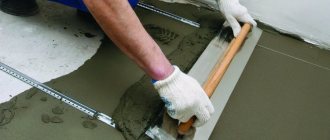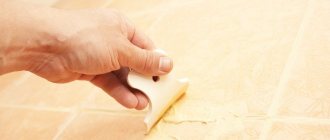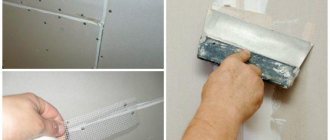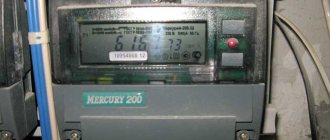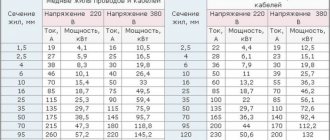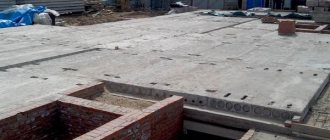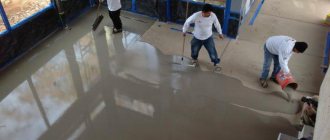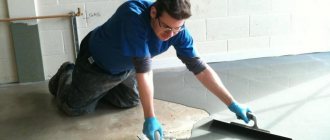Self-leveling floor Unis, to be honest, is a self-leveling mixture. Alas, often not only consumers, but even manufacturers do not see the difference between these concepts. But this is not the same thing at all. There are differences, and quite significant ones. In the first case, it is assumed that the material, after appropriate processing, does not require laying floor coverings. The second option implies that linoleum, laminate or parquet boards will be laid on the finished base. This should be remembered when using compositions in the construction or renovation of premises, which in the company’s catalog are called self-leveling floor “Unis”.
What determines drying time?
The information that mixture manufacturers place on the packaging is an average value calculated for standard conditions. In reality, the drying time of the self-leveling floor depends on various external circumstances. The following reasons have the greatest impact:
- Type of composition. One group includes screeds (rough levelers, cement-based). The second group is self-leveling (self-leveling) mixtures, what is usually called self-leveling floors. These include epoxy, polyurethane and other polymer floors.
- Quality of the dry mixture (brand, proportions of additives and polymers included).
- Layer thickness and number of layers applied. Obviously, the thicker the layer, the longer it will take to harden. The pouring time for multi-layer floors also increases.
- Working conditions: air temperature and humidity.
Classic interior with self-leveling floor Source wp.com
Main disadvantages
Self-leveling floor "Horizon Eunice" can be chosen by you if you familiarize yourself not only with the advantages, but also with the main disadvantages. Among the latter, it is worth highlighting the meager choice of colors and patterns. In addition, before starting work, it will be necessary to prepare a rough coating, level the surface and control the humidity level.
After pouring and drying the composition, it will be quite difficult to cope with dismantling the layer. Sometimes consumers also refuse self-leveling floors because of their high cost and complexity of repairs. Installing such coverings is also quite expensive, this is true when compared with conventional flooring solutions.
Features of hardening of bulk compositions
The mixture contains a base mineral filler (cement or gypsum) or a polymer, and modifying additives. After adding water, physicochemical reactions are started, which proceed in the following order:
- Setting (drying). The first signs appear 30-40 minutes after adding water and last 2-12 hours. The solution increases viscosity, but upon mechanical action it returns to a liquefied state. Therefore, the instructions indicate when the screed is so ready that you can walk on it and begin installing the finishing coating.
- Hardening. The plastic mass begins to gain strength (ripen). Ordered structures form in the layer, the coating becomes denser and more durable. The floor is ready for constant use; furniture can be brought into the room.
The patterns of processes are precisely known for cement, and they are determined for normal (average) air values: humidity 60% and temperature +20°C. Depending on the brand, cement gains strength:
- From 60-80% – in 7-14 days.
- Complete 100% drying - after 28 days.
Furniture is placed only after complete drying Source pinimg.com
There are no strict rules for gypsum; much depends on the chosen brand (grinding fineness), as well as retarding components (glue, lime). On average, setting is noticeable after half an hour, and final strength is achieved after 14-20 days.
Preparation of the solution
The Unis Horizon solution must be prepared in advance. To do this, the dry mixture is placed in a container with clean water. For 1 kg of composition you will need approximately 0.14 liters of water. Then the mixture is stirred until smooth.
This can be done mechanically, using a professional mixer set at low speed. Manual mixing is permissible if the mass of the mixture does not exceed 1 kg. The solution is then left for 5 minutes and then mixed again. The prepared portion must be consumed within 120 minutes.
How to speed up drying
Manufacturers have already taken care of a lot. In order for a self-leveling floor under tiles or on a concrete screed to gain strength faster, additives with modifying properties are introduced into the mixture. They increase the price of the product, but provide results that justify the investment:
- They influence the speed of setting of the solution (accelerate or slow down depending on needs).
- They improve the strength of the finished floor (fracture resistance) and its elasticity (resistance to tearing under loads).
- They increase the density and hydrophobicity of the hardening mixture.
Modifiers simplify working with bulk mixtures Source pixpa.com
One of the important factors that determines how long a layer will take to dry is its thickness. Therefore, if you are going to make a self-leveling floor on a concrete screed, you should spend a little time preparing the surface. To do this, you need to level it as much as possible, get rid of irregularities and cracks (for example, putty). This way you not only reduce the hardening time, but also save money - you reduce the thickness of the layer and, consequently, the consumption of the polymer mixture.
The drying process can be accelerated on your own if you create suitable conditions. It is optimal if you can control the following factors:
- Stable room temperature, 22-25°C. This is especially important if the mixture contains polymer additives.
- Air humidity is within 60%. The higher the humidity, the longer it will take for the self-leveling floor to dry.
- No direct sunlight. Uneven lighting interferes with quick and high-quality drying, so windows are screened (for example, with foil).
- Drafts should be avoided, this is especially important for glossy surfaces.
The thinner the layer, the faster it will dry Source navseruki.by
See also: Catalog of companies that specialize in finishing materials and related work
Characteristics of a self-leveling base
These parameters are suitable for many brands, but it is Eunice Horizon that meets all the parameters of GOST 30244-94, clause 5.5. SNiP-21-01-97 and SNiP 3.04.01-87. Among these indicators:
- increased strength;
- resistance to moisture and mold;
- alternative use as a cement screed or finishing leveler;
- quick drying;
- the ability to lay tiles after 72 hours;
- use for underfloor heating systems, floating floors;
- no seams;
- durability.
How long does it take for different types of self-leveling floors to dry?
The main factor that determines how long a particular mixture dries is the binder component; according to it, mixtures are divided into the following groups:
- On a gypsum basis. Gypsum surfaces are afraid of water, which is why they are not suitable for wet rooms. Otherwise, they are positioned as high-speed ones: after 3-5 hours they can withstand pedestrian traffic. Laying tiles can begin after 3 days; to install laminate or linoleum coverings you will have to wait 7 days.
- Cement based. Self-leveling concrete floor is a universal option, suitable for wet rooms. The coating will dry and completely harden in 14-21 days. But in order to install, for example, massive porcelain stoneware, you need to wait until it reaches 100% strength (28 days). Tiles can be laid after 7 days, linoleum - after 14, laminate - after 14-21 days. If the mixture contains plasticizers, polymerization will take 7-14 days.
- Cement-gypsum mixtures. The trains are ready for foot traffic in 4-8 hours. Laying of ceramics begins after 5-7 days, linoleum - after 7-14, laminate - after 14-21 days.
Solid parquet is laid on a self-leveling floor after complete drying Source waysi.ru
- Made from polyurethane. The polymer coating is highly wear-resistant and heat-resistant. After pouring, you can walk on the polyurethane surface in 10-15 hours; complete hardening will take three days. The thickness of the layer has a big influence.
- Epoxy floors. Resistant to moisture, mechanical stress, and chemicals. They are often poured in several layers, so the time for complete hardening ranges from 2 to 5 days.
Advantages and disadvantages
The group of companies, which settled in the Russian Federation in 1994, is one of the leaders in the domestic industry producing construction and finishing materials. But among the wide range of manufactured products, there are still no finishing compositions that are in demand by consumers and intended for use without additional finishing. There is no doubt that, in terms of price and technical characteristics, the mixture, which is in good demand, presented in the catalog as the self-leveling floor “Unis Horizon Universal”, looks very attractive. Using it, you can:
- Make a smooth and strong screed with a thickness of 3 to 100 mm, filling potholes or cracks in the base.
- Install warm floors, which are becoming increasingly popular among owners of apartments and individual residential buildings.
- Prepare the base for laying linoleum, ceramic tiles, laminate panels or parquet.
Bestseller - self-leveling floor "Unis Horizon" There is no doubt, in addition to the affordable price, it has other advantages:
- It is made according to a recipe that ensures a uniform filling structure. The necessary changes are achieved through the use of specific plasticizers and modifiers.
- It hardens in 2 hours and dries completely within a day, after which you can glue tiles, lay linoleum or laminate onto it. This self-leveling floor “Yunis” is quick-hardening. Using it, it is possible to significantly reduce the time required to complete the work.
- It has high strength, withstanding compressive loads of up to 20 MPa (200 kg per square centimeter), which is quite sufficient for operating conditions in parking lots and transport enterprises.
- It can be applied in a layer thickness from 3 to 100 mm, which allows you to level bases with large differences in height and, in one pass, seal both small and large defects.
- Designed for a long service life of 15 years or more.
Flaws:
Self-leveling floor "Unis Universal" is in good demand. However, craftsmen with experience in construction and finishing work warn that specialized compounds have the best performance. After all, versatility is always a compromise, for the sake of which you have to sacrifice some characteristics. This leads to disadvantages:
- Low turnover. Simply pouring the mixture and waiting until it is distributed evenly will not work. It will take some effort to level it out.
- Significant increase in the amount of waste. Those who claim that the consumption of Yunis self-leveling flooring is not high are lying. To achieve satisfactory results, you will have to try.
- Sensitivity to temperature changes. Do you want the mixture to dry on time and harden evenly? This means that during operation you will have to turn off heating devices and air conditioners.
Despite this, reviews of the Yunis self-leveling field are generally positive. But when you read about the beautiful appearance with a polished effect, the question arises: did the user really deal with this material?
How to tell if the floor is dry
An indicator of the readiness of the coating for further work is the residual moisture. Its value (usually no more than 4%) is important for laying finishing materials made of wood, as well as carpet and linoleum. For ceramic, stone, and vinyl tiles, the value may be higher.
For wood coverings, the residual moisture of the base is important Source stroy-domka.ru
Briefly about the main thing
The drying of the self-leveling floor is a parameter that determines when you can begin laying the finishing floor covering. The parameter consists of two parts: drying itself and strength gain; they allow you to determine when you can walk on the screed and when you should start laying tiles or parquet.
Manufacturers indicate approximate terms, since the process depends on external factors. To speed up drying, it is important to ensure optimal conditions in the room and protect the screed from the sun and drafts.
Ratings 0
Carrying out alignment
As soon as the solution is ready, you can begin to lay it on the surface, distributing it evenly over the base as a rule. Ceramic tiles can be laid after the work is completed only after the surface has dried. If the floor has differences of more than 50 mm, then the floor leveler should be applied in several layers. Before you begin laying the next layer, you must wait until the previous one has completely dried, which will take 28 days. Before this, the surface is treated with primer and dust-free.
